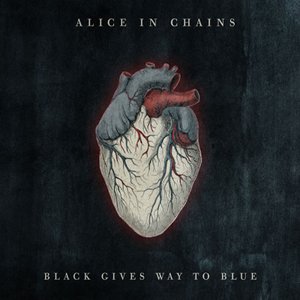
Alice In Chains - "Black Gives Way to Blue" Review
I’m not much of a lyrics guy. I don’t tend to study them, and I certainly don’t tend to read much into them. Still, when the first chorus of the first track of Alice In Chains’ new album came out of my speakers, I listened. “There’s no going back to the place we started from.” While not a deep metaphor, it is a poignant reminder of the band I’m listening to, a continual needle pricking the wounded tissue of what must feel to Jerry Cantrell like unfinished business.
It encapsulates both a band’s incredible sorrow at losing a friend, and also their stoic resolve to march on. The memory of Layne Staley is close to all their hearts, and so the album serves both as Staley’s musical eulogy and the band’s symbolic rebirth. To read the liner notes is practically to read private thanks to a support circle of close friends and strong encouragement. Is it really any different than any other liner page? Probably not, but it’s something about it being *this* band, *these* musicians, that make it more heartfelt, more moving. Seeing Layne’s name in the thank you notes brings back all the feelings of disappointment that we as fans felt when we heard the news, April 20th, 2002.
“Black Gives Way to Blue” is not “Facelift.” Gone are the whimsical blues stomps, supplanted by a more mature sound that is rife with both the band’s characteristic pain and dignified disquiet. The album is the logical extension of “Get Born Again;” torn, emotional, ponderous, intelligent, loud, practiced, and all in their proper proportion. The band wastes no time in employing their greatest strength, which is to create a musical feeling of unease and strife. As “All Secrets Known” begins, the rhythmic guitar is immediately met with a disjunctive, tangible harmony that sets a classic grunge mood.
At first, the sound seems very mainstream, perhaps only a step removed from what we hear out of radio metal these days. It was then that I remembered how influential Alice In Chains was in creating that very sound, and suddenly, I was in 1993 again. The guitars are rich and full, the drums powerful, the melodies muddled and dragged through the sludge the way good grunge should be.
There is a little bit of an “uncanny valley” here, if I can steal that term from robotics. The sound, especially the vocals, are so close to what we classically think of as Alice in Chains that it constantly serves to remind us it is not quite what we remember. That folds into the whole idea of the band’s rebirth, as what is old can be new again. Jerry Cantrell is ever the effective song writer, from a plodding, dire dirge like “A Looking In View,” to a more serene but emotional guitar piece like “Your Decision.”
Much has been made of Elton John’s appearance on the album, but ultimately, his piano makes little overall difference on the title track. It’s a nice line, but anyone could have played it. The song itself is not one of my favorites on the album, but it is necessary as a final, impassioned goodbye to Layne, draped in the subtle hints of hope and healing to come.
Really, that’s the overarching theme of “Black Gives Way to Blue.” Alice In Chains is a band in flux, even seven years after their lead singer’s untimely death. The music, whether angry as in “Last of My Kind,” serene and resigned as in “When the Sun Rose Again,” or remorseful as in “Private Hell,” is dour, but engenders a small kernel of resolve, or dare I say, optimism?
More to the point, no matter which way it’s examined, “Black Gives Way to Blue” is Alice In Chains. I had my reservations about the album’s very existence, but I find them alleviated in what is really a contemporary rebirth of a classic. There are few straight duds on the album, as each song, even on the back half, offers a piece, if not an entire picture. Even “Acid Bubble,” probably the album’s weakest offering as a product of its repetitiveness, has a disjointed, powerful, signature Alice In Chains chorus. The harmonies on all the songs between Cantrell and William Duvall are well placed and orchestrated. Nothing on the album feels forced, and that might be its best credit, given all the hype and emotion surrounding the album.
My reaction to this album is no doubt a little inflated because I am simply excited to see a revival of grunge, if only for a moment. Still, I can’t deny the accomplishment that this album represents, both as part of a legacy and as a single piece of music.
Maybe the author Thomas Wolfe was right; maybe you can’t dwell on a past you can’t change. What’s done is done, and yesterday only makes us stronger for tomorrow. Still, damned if it doesn’t feel good to go home again.

